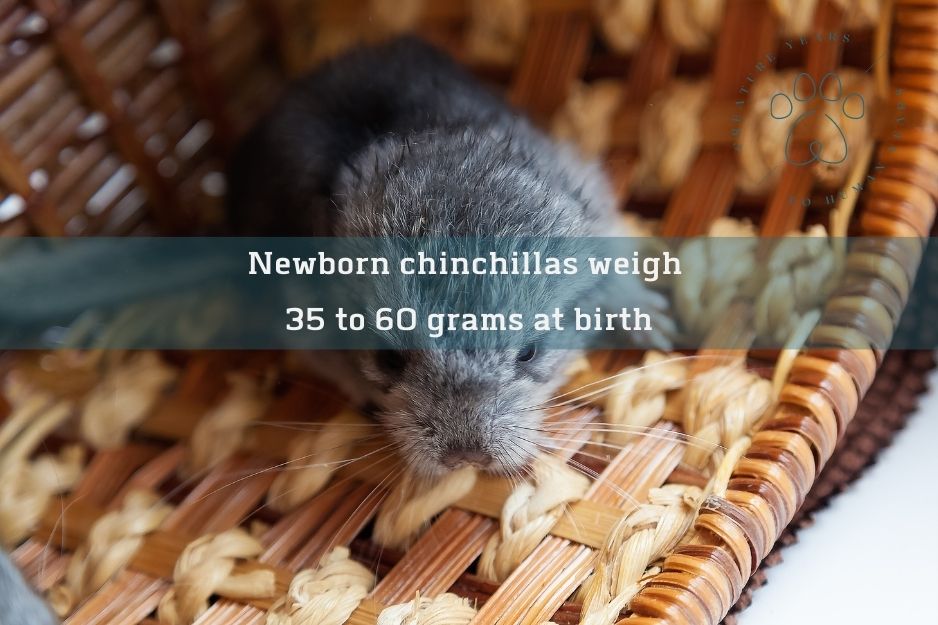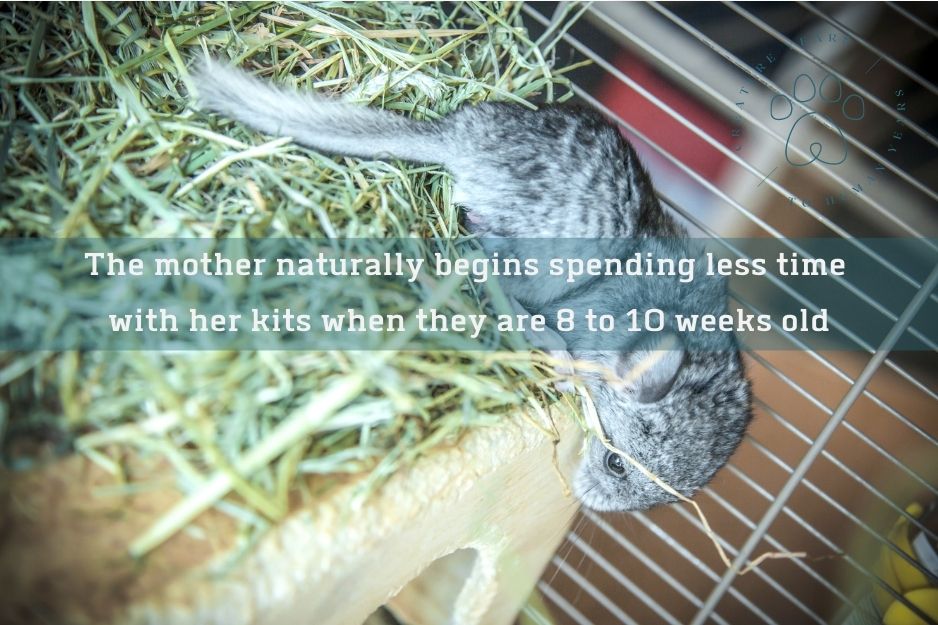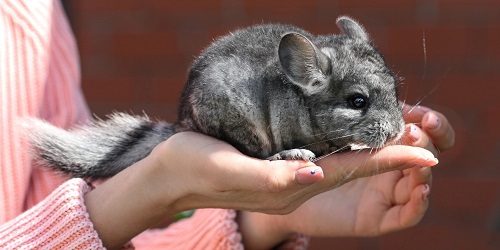Some of the links on our website are affiliate. By making a purchace via our links, you help us create new content and support animal shelters and funds
Chinchilla life cycle

While chinchillas can live for over a decade, they go through several important life stages during their first year already. The life cycle of a chinchilla includes:
It's important that you pay attention to the size and development stage of a chinchilla to ensure proper care.
Let's take a look at each life stage of a chinchilla and what you can expect in that time:
Gestation
The life cycle of a chinchilla starts with the gestation period, which lasts 110 to 115 days. A female chinchilla may have up to four babies per litter. However, most litters include just two newborn chinchillas.
Female chinchillas can also mate up to three times per year. Keep in mind that frequent breeding can decrease the lifespan of a female chinchilla due to the stress of labor.
As the time to give birth approaches, female chinchillas become less active and more aggressive. Placing a pregnant chinchilla in a nesting box may help reduce stress and decrease the risk of newborn deaths.
Newborn chinchillas
Newborn chinchillas, also known as kits, weigh about 35 to 60 grams at birth. They open their eyes within a few minutes and start wobbling around.

As with many species, newborn chinchillas rely on their mother for food and warmth. The baby chinchillas immediately seek their mother for warmth. Newborns get milk from their mothers but can also eat plant food.
Newborn chinchillas are energetic and playful. They are often scurrying around their habitat by the end of the first day. They start exploring early on but stay near their mother for about the first 8 to 10 weeks of their lives.
Use caution when handling newborn chinchillas, as they are very quick and agile. They are also more susceptible to injuries if dropped.
Watch these three cute baby chinchillas grow:
Weanlings
The weaning process typically starts when baby chinchillas are about 8 to 10 weeks old. The mother naturally begins spending less time with her kits.

Weanlings are separated by gender at this time to prevent breeding. The females can stay with the mother, but the males need to go to a separate habitat.
The weaning process can be stressful for weanlings. They are adapting to life without their mother. Pay close attention to their eating habits to ensure that they are still thriving, as some chinchillas do not easily take to their new diets.
Ten to 12 weeks is typically the minimum age of pet chinchillas sold in stores. Breeders wait until the weanlings have successfully finished weaning.
Juvenile chinchillas
After weaning, chinchillas are considered juveniles. This stage lasts until the chinchilla is about 12 months old. Juvenile chinchillas are constantly learning and developing.
Most juvenile chinchillas do not grow much during the first few weeks after weaning. The food they consume does not offer the same nutrition as their mother’s milk. However, they gradually adapt to the new diet and typically resume growing within a few weeks.
The teeth of the juvenile chinchilla also continue to grow rapidly. They need to feed on hay to wear down the teeth and keep them from becoming overgrown (dental health is important for chinchillas to live longer).
Male juveniles between the ages of 7 and 12 months may be selected for breeding. Female juveniles may also be placed into breeding at the same age, but breeders often wait until the female is at least 10 months old.
Adult chinchillas
Chinchillas become adults at about 12 months of age. Most pet chinchillas stop growing between 10 and 18 months. A short-tailed chinchilla may reach 12 to 18 inches in length while a long-tailed chinchilla may measure 9 to 15 inches in length.

However, they may continue to grow up until the age of 2 years old.
Female long-tailed chinchillas may weigh up to 1.75 pounds and measure 9 to 14 inches with a 3-inch to 6-inch tail. Males weigh about one pound. Short-tailed chinchillas are larger, measuring up to 19 inches long and weighing up to 3.1 pounds.
An adult chinchilla is typically still active throughout most of its life. However, chinchillas tend to age at different speeds.
For example, some chinchillas may start showing signs of advanced aging at 10 years old while others remain energetic and spry into their late teens.
Older chinchillas may exhibit changes in their behavior as they approach the end of their life cycle. You may notice that your older chinchilla starts refusing food and becomes more lethargic.
Continue to pay attention to your chinchilla’s weight. Older chins that experience weight loss may need food supplements.
Chinchilla life cycle FAQ
when do chinchillas stop growing?
Chinchillas typically stop growing between the ages of 10 and 18 month, but there are exceptions. Some chinchillas might continue growing until they are 2 years old.
how long do baby chinchillas stay with their mother?
Baby chinchillas stay with their mother until they are around 10 to 12 weeks old. During this period, the weaning process takes place, in which the mother chinchilla gradually reduces the time she spends with her kits.
how long is chinchilla gestation period?
Chinchilla gestation period lasts 110-115 days.
how big do chinchillas get?
The size of a grown chinchilla depends on the breed and gender. Short-tailed chinchillas are larger than long-tailed ones. Short-tailed chinchillas may weigh up to 3.1 pounds and measure up to 19 inches in length.
how many babies do chinchillas have?
Chinchillas may have up to four kits per litter. However, typically only two baby chinchillas are born.
what is a baby chinchilla called?
Baby chinchillas (newborn to 10 weeks old) are called "kits".
